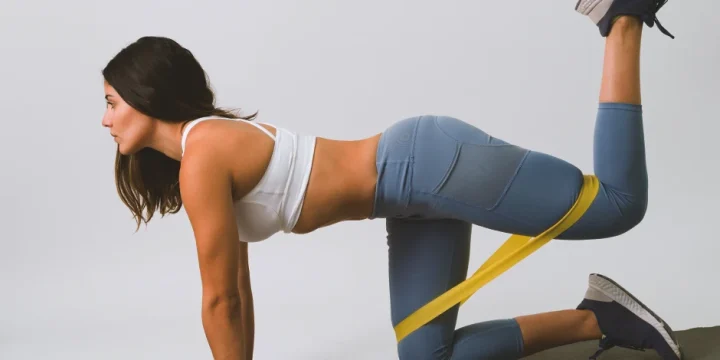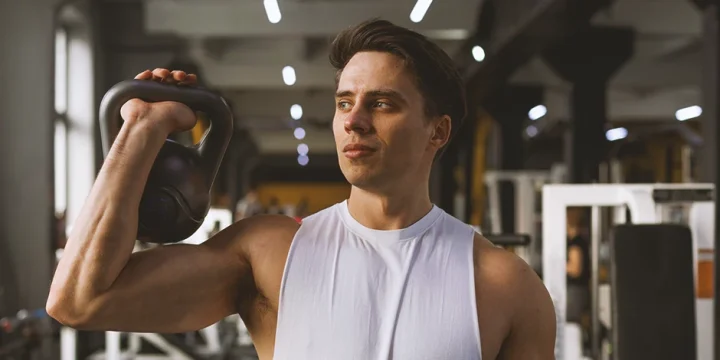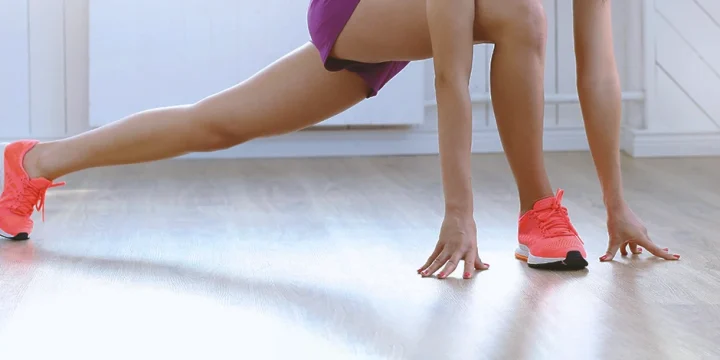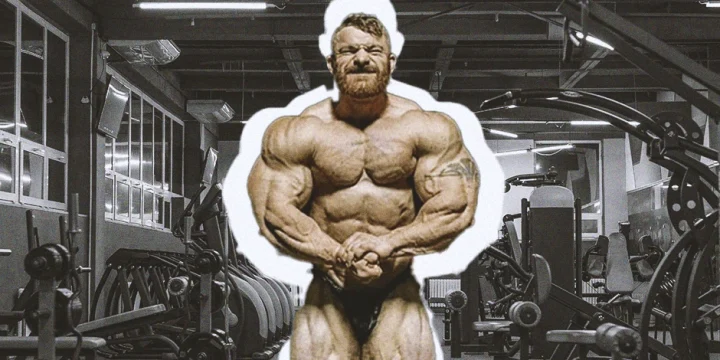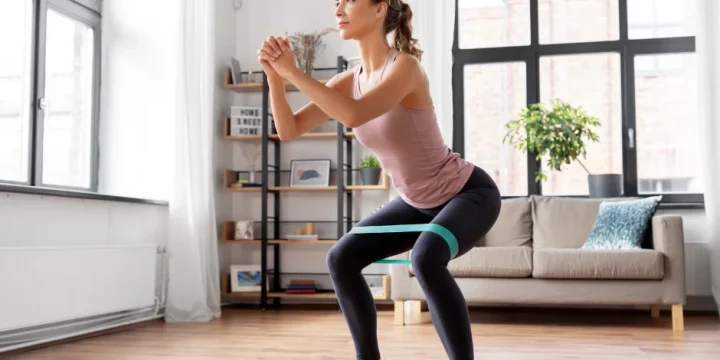Lower back pain from squats is common among fitness enthusiasts and athletes.
However, it's not the squat itself that's harmful, but the incorrect form and technique when lifting too much weight that leads to discomfort.
Drawing from my personal training experience, proper guidance and modifications can help me perform squats safely, minimizing the risk of back pain, even while using body weight.
Correct alignment, progressive overload, appropriate warm-ups, and cool-downs are all vital strategies in this process.
This article provides insights into the causes of back pain from squats, preventive measures, and corrective exercises. All backed up by the results of hundreds of people I’ve helped.
Quick Summary
- To avoid lower back pain while squatting, maintain proper form with a straight back, engage your core, use supportive footwear, and perform the squat with controlled movements and appropriate weight.
- Squat alternatives like goblet squats, box squats, and leg presses relieve back pain while providing lower body strength and conditioning.
- Research published on the National Institutes of Health website shows that maintaining proper form during squats helps distribute weight evenly across your leg muscles and core and minimizes stress on your lower back.
- In my experience, consistently practicing proper squat techniques is the most effective way to prevent and alleviate lower back pain.
How to Do a Squat to Reduce Lower Back Pain

You can do a squat to reduce lower back pain like a traditional squat but ensure that you have proper technique, tight muscles, and a steady weight.
According to the Journal of Strength and Conditioning Research, pain during squats, especially in the lower back area, could be due to previous injuries or improper form [1].
Based on my extensive experience working with multiple clients, here's how you can perform a squat properly to reduce injuries and pain:
- Stand with feet hip-width apart, firmly grounded, and slightly pointed outwards for stability.
- A leading cause of lower back pain is losing spinal alignment during squats. Keep your back straight, maintaining a natural curve at the bottom.
- Begin by pushing your hips back as if you're about to sit on a chair. As your hips shift backward, bend your knees and lower your body.
- Squats don't need to be deep to offer benefits. Go low as you maintain spinal alignment and avoid pain.
- Push from your heels and ensure your hips and chest rise simultaneously when standing from the squat. This alignment helps keep the spine straight and reduces pressure on the lower back.
Techniques to Prevent Lower Back Pain While Squatting

The techniques to prevent lower back pain while squatting include:
Proper Squat Form
Maintaining the proper form during squats helps distribute weight evenly across your leg muscles and core, minimizing stress on your lower back, as shown by research published in the National Institutes of Health [2].
Here's how to ensure your form is spot-on:
- Place your feet shoulder-width apart, toes pointed slightly outward.
- Engage your core. Keep your chest lifted, maintaining a neutral spine.
- Lower your body as though sitting back onto a chair, stopping when your thighs parallel the ground.
- Drive upwards through your heels, returning to the starting position.
Strengthening Core Muscles
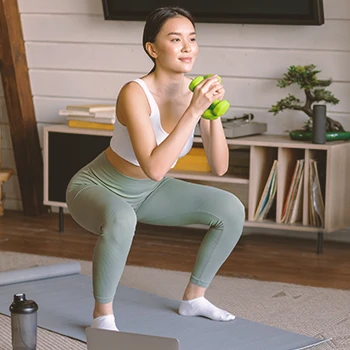
From my personal training experience, I can't stress enough how crucial strengthening core muscles is for supporting your lower back during squats.
They are the heart of your body's power and stability when lifting.
What you need to do to improve core strength:
- Incorporate exercises such as planks, crunches, and leg raises into your routine.
- Always engage your core, not just during core-specific exercises.
- Include resistance training exercises in your routine to further build core strength.
Incorporating Stretching and Mobility Exercises
Through my years of training clients, I've found that incorporating stretching and mobility exercises is essential for enhancing hip mobility and overall flexibility.
Here’s what you can do to stretch your back and maintain a good athletic performance:
- Include dynamic stretches like leg swings and lunges in your pre-workout routine.
- Perform static stretches after workouts to improve flexibility.
Regularly perform mobility exercises like hip circles and ankle rotations.
Proper Footwear When Squatting
In my training sessions, I always advise clients to consider the type of footwear they use during squats.
Proper footwear, such as shoes with adequate support and a flat sole, can significantly influence your squat form and stability, potentially reducing the risk of lower back pain.
Mobility Articles:
Alternative Exercises to Squats for Those With Lower Back Ache

In my practice, when clients experience lower back aches while squatting, I often recommend alternative exercises that are more accommodating.
For different fitness levels, consider incorporating squat variations like chair squats for beginners, or single-leg squats for more advanced individuals. These variations can provide the benefits of squats while minimizing the risk of lower back pain.
Here are other suitable squat variations and alternatives, focusing on form and safety.
Goblet Squats
The goblet squat variation provides an excellent way to work major muscles with a lower risk of back strain.
Holding a weight close to the chest changes the dynamics, taking some strain off the lower back when performed properly.
Here's how you do it:
- Place your feet wider than hip-width apart. The toes pointed slightly outward. Hold a weight (kettlebell or dumbbell) close to your chest.
- Lower your body into a squat, keeping the weight close to your chest and your back straight. Maintain your balance.
- Press your heels into the ground to overcome resistance and return to your starting position.
Goblet Squat Articles:
Box Squats
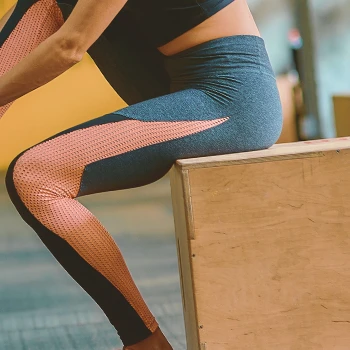
Box squats focus on squat technique and strength.
They help enhance the leg muscles while keeping the lower back safe.
Here's how you do it:
- Keep your body steady before a sturdy box or bench, feet hip-width apart.
- Lower your body backward as if sitting on the box, keeping your back straight. Make sure the box catches you safely.
- Lean forward slightly and stand back up, returning to your starting position.
Leg Press
The leg press machine is an excellent alternative if you can’t do squat variations.
It takes the pressure off your back while still engaging the muscles targeted in a squat.
Here's how you do it:
- Sit in the leg press machine, hip-width apart.
- Push the platform away with your legs, but don’t lock your knees at the top.
- Slowly bring the platform back to your starting position.
Incorporating Recovery Methods to Help With Lower Back Pain

Lower back pain after squatting could signal a flawed technique, inadequate arch support, or overexertion.
Incorporate the following recovery methods into your routine — or ask a personal trainer to do so — to relieve discomfort and improve overall joint mobility.
- Cold and Heat Therapy: Alternate between applying ice packs (to reduce inflammation) and heat (to relax muscles) to the affected area.
- Gentle Stretching: Perform stretches that target the lower back, hamstrings, and hips. For example, a child's pose and a cat-cow stretch. Be gentle, and avoid bouncing.
- Physical Therapy: Consulting a physical therapist provides specialized exercises and guidance tailored to your condition.
- Massage Therapy: A professional massage relieves muscle tension and promotes blood flow to the lower back.
- Anti-Inflammatory Medication: Over-the-counter pain relievers like ibuprofen help manage pain and reduce inflammation.
- Maintain Good Posture: Be mindful of your posture, especially when sitting for extended periods. Use lumbar support and take breaks to stand and walk around.
- Use a Supportive Mattress and Pillow: Make sure your mattress and pillow provide enough support to maintain the natural alignment of your lower spine during sleep.
- Breathing Exercises: Mindfulness meditation and deep breathing manage pain and reduce stress. Additionally, incorporating breathing techniques such as diaphragmatic breathing can further enhance your squat performance. Proper breathing helps maintain intra-abdominal pressure, which supports the spine and reduces the likelihood of lower back pain.
- Stay Active: Engage in low-impact activities like walking, swimming, or cycling. This keeps the muscles supporting the back strong.
- Hydration and Nutrition: Drink plenty of water and consume a balanced diet of anti-inflammatory foods like leafy greens, nuts, and fatty fish. A diet rich in protein, omega-3 fatty acids, and anti-inflammatory foods can aid in muscle recovery and resilience, potentially reducing the risk of lower back pain from squats
Understanding Pain in Lower Back
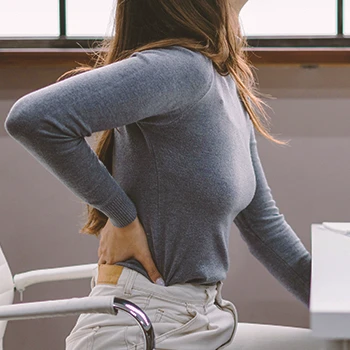
Lower back pain is a significant issue impacting daily life and exercise routines.
The lower back, also known as the lumbar region, consists of five vertebrae (L1-L5) in the spine.
Between them, some discs act as cushions.
The lumbar region supports much of the upper body's weight and involves a range of movements, such as bending and twisting.
“Effective management of low back pain necessitates the use of a biopsychosocial framework that emphasizes self-management, the resumption of normal activities, and psychological support. Yet, there's a substantial gap between evidence and practice, with inappropriate reliance on treatments like imaging and surgery rather than focusing on prevention strategies.”
- Nadine E Foster, Research Institute for Primary Care & Health Sciences
Causes of Pain in Lower Back
The reasons why you could have lower back pain are:
- An old injury that hasn't healed properly can be a persistent source of low back pain. The body may compensate for the injured area by exerting more pressure on the lower back, leading to discomfort and further harm.
- The incorrect squat form can strain your lower back, especially when handling heavy weights.
- Age-related wear and tear on the discs between the vertebrae.
- A sedentary lifestyle contributes to lower back pain due to back and core muscles weakening and stiffening.
FAQs
How Can I Squat Without Hurting My Lower Back?
You can squat without hurting your lower back by maintaining a proper squat form. Keep your back straight, hips pushed back, and distribute your weight evenly on your feet. Strengthening core and leg muscles also provide crucial stability during squats.
What Can I Do If Squats Hurt My Lower Back?
If squats cause lower back pain, stop the exercise immediately to avoid worsening things. Consult a medical professional first to get insights about your condition. Consider revising your squat technique or try alternative exercises like goblet squats, box squats, or leg presses.
References:
- https://journals.lww.com/nsca-jscr/Fulltext/2010/12000/
- https://pubmed.ncbi.nlm.nih.gov/29573872/
About The Author
You May Also Like
